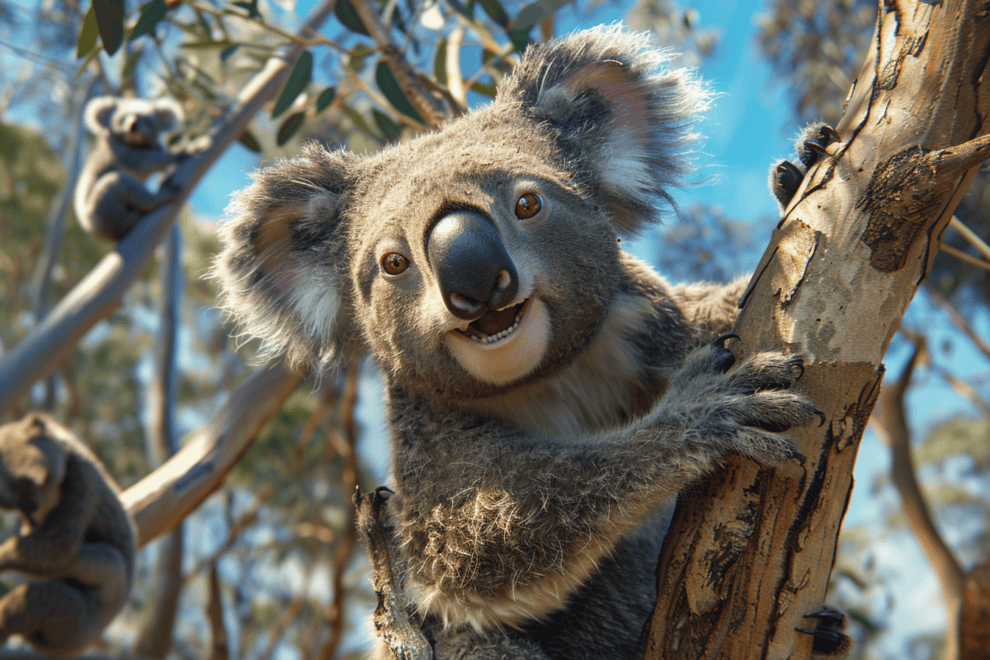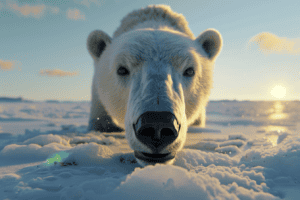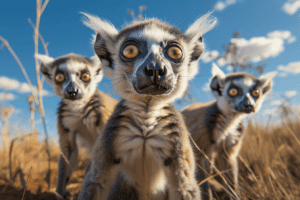Imagine surviving on just eucalyptus leaves! That’s what koalas do.
These furry creatures munch on up to a kilogram of these leaves daily, getting both their nutrients and hydration from them.
Eucalyptus leaves are tricky, though—they’re low in nutrients and packed with toxins. Luckily, koalas have special liver enzymes to detoxify these harmful compounds.
Their slow metabolism and specialized digestive bacteria help them break down the leaves efficiently. Koalas are also picky eaters, often choosing specific eucalyptus species, which makes habitat protection super important.
The Unique Diet Of The Koala

When it comes to their diet, koalas exclusively munch on eucalyptus leaves, despite their low nutrient content. This unique dietary choice sets them apart from most other animals.
You might wonder how koalas manage to thrive on such a limited and low-nutrient food source. Well, their digestive system is specially adapted for this purpose.
Koalas have a highly specialized digestive system that allows them to detoxify the toxic compounds found in eucalyptus leaves.
Their long cecum, a part of the digestive tract, houses bacteria that break down the fibrous leaves, extracting as many nutrients as possible. This adaptation is essential because eucalyptus leaves aren’t only low in nutrients but also contain toxins that could be harmful to other animals.
Imagine munching on tough, chewy leaves all day. That’s what koalas do, consuming up to a kilogram of eucalyptus leaves daily. This commitment to their diet is remarkable, considering the limited variety and nutrient content.
Koalas also rely on the moisture in these leaves for their water intake, rarely drinking from other sources. This impressive adaptation ensures they meet their hydration needs without needing to leave their trees in search of water.
Eucalyptus Leaf Nutrition

Understanding the nutritional composition of eucalyptus leaves helps explain why koalas have developed such specialized dietary adaptations.
These leaves primarily consist of 50% water, 18% fiber, 8% fat, 5% carbohydrates, and 4% proteins, with 2% minerals and 13% tannins. This unique nutritional profile means koalas need to consume a lot of leaves to meet their dietary requirements.
Koalas feed on various parts of eucalyptus trees, including bark, buds, and flowers. Despite the leaves’ low nutrient content and high tannin levels, koalas have adapted to make the most of this challenging food source.
The leaves’ high water content helps keep koalas hydrated, reducing their need to seek out additional water sources. The fiber aids in digestion, though the high tannin levels can interfere with nutrient absorption.
Koalas are incredibly selective about the species of eucalyptus trees they consume, preferring certain types that offer a slightly better nutrient profile. They also choose leaves at specific maturation stages, optimizing the balance of nutrition and palatability. While most animals find the toxic oils in eucalyptus leaves poisonous, koalas have evolved to tolerate and even thrive on this otherwise harmful diet.
How Do Koalas Detoxify The Eucalyptus Leaves?

To thrive on their toxic eucalyptus diet, koalas rely on specialized liver enzymes and a unique digestive system to detoxify harmful substances.
Koalas’ digestive system is also a marvel of adaptation. It includes a specialized cecum, a fermentation chamber that helps break down the tough, fibrous leaves.
This process not only neutralizes the toxins but also extracts essential nutrients. Without these unique features, koalas would struggle to survive on such a toxic diet.
Interestingly, koalas are among the few mammals that can tolerate the high levels of tannins in eucalyptus leaves.
Their detoxification process is so efficient that they can derive energy from a food source that would be lethal to most other animals. It’s a fascinating example of nature’s ingenuity, allowing these adorable creatures to thrive in their specific ecological niche.
Other Digestive System Adaptations Of Koalas

Koalas’ digestive system features several unique adaptations that enable them to process their toxic, fibrous eucalyptus diet efficiently.
One key adaptation is their incredibly slow metabolic rate, allowing them to conserve energy while extracting maximum nutrients from the tough eucalyptus leaves. This slow digestion process guarantees that the nutrients are thoroughly absorbed.
Koalas have a specifically adapted caecum, a pouch connected to the large intestine. This organ is essential for breaking down the fibrous plant material, thanks to its population of specialized bacteria that help ferment the tough leaves. This fermentation process is crucial for extracting essential nutrients from a diet that most animals can’t digest.
The liver of a koala also plays a significant role in their digestive adaptations. It works diligently to detoxify the harmful oils found in eucalyptus leaves, making the leaves safe for consumption. Without this efficient liver function, koalas wouldn’t be able to survive on their exclusive diet.
These combined digestive adaptations—slow metabolism, specialized caecum, and a powerful liver—are what allow koalas to thrive on a diet that would be toxic and indigestible for most other animals.
Preferred Eucalyptus Species

While koalas have unique digestive adaptations for processing their eucalyptus diet, they show a clear preference for specific eucalyptus species like Eucalyptus crebra, E. microcorys, and E. tereticornis.
These tree species provide the high nutrient content koalas need, and they’re low in phenols and tannins, substances that can be harmful in large amounts. By choosing these particular species, koalas make sure they get the best nutrition for their specialized diet.
However, habitat loss poses a notable threat to these preferred eucalyptus species. As urban development and deforestation continue, the availability of these critical food sources diminishes. Koalas are then forced to turn to secondary food trees like Corymbia citriodora and Eucalyptus major, which mightn’t offer the same nutritional benefits.
Koalas aren’t just picky about the type of eucalyptus; they’re also selective about the maturation stage of the leaves they consume.
They tend to choose young leaves which are more tender and digestible. The characteristics of these tree species, such as tree height, bark type, and leaf properties, greatly influence their food choices. Protecting these habitats is essential to maintaining the health and survival of koala populations.
Regional Dietary Variations

In different regions, koalas adjust their diet based on the local eucalyptus species available to them. These regional dietary variations mean that koalas in one area might favor different eucalyptus trees compared to their counterparts elsewhere.
For instance, some koala populations prefer specific eucalyptus species because of their higher nutritional content, allowing them to thrive in those particular environments.
You’ll find that regional differences in eucalyptus leaf toxins greatly influence koalas’ feeding habits. Certain eucalyptus species might’ve higher toxin levels in one region, prompting koalas to develop a preference for less toxic varieties.
This adaptation highlights the koalas’ remarkable ability to adjust their diet according to the available resources, ensuring they get the most suitable and safe nutrition.
Understanding these regional dietary variations is essential for conservation efforts. By recognizing which eucalyptus species are preferred in different areas, you can help tailor habitat protection strategies to support specific koala populations effectively. This approach ensures that koalas have access to their preferred food sources, promoting their health and survival.
Impact on Koala Behavior

The specialized diet of eucalyptus leaves greatly influences koala behavior, driving their foraging patterns and social interactions.
You’ll notice that koalas are quite solitary creatures, mainly because they need to spend a lot of time foraging for eucalyptus leaves. This constant search dictates their movement patterns and territory choices. They’re not very social and often prefer isolation, which helps them conserve energy.
Due to their dependence on eucalyptus leaves, koalas have selective feeding habits, often choosing specific tree species. Their unique digestive system allows them to detoxify the toxic compounds in eucalyptus leaves, influencing when and how much they eat. They usually feed at night and rest during the day, conserving the energy needed to digest their fibrous diet.
Climate change adds another layer of complexity to koala behavior. Shifts in climate can affect the availability and nutritional quality of eucalyptus leaves, forcing koalas to adapt their foraging strategies. Moreover, when koalas are injured, they become even more vulnerable. It’s essential to care for injured koalas, as their specialized diet makes recovery challenging.
Their behavior, deeply tied to their diet, showcases their remarkable yet precarious adaptation to their environment.
Conservation and Diet

Protecting koalas means preserving the eucalyptus forests they depend on for survival. Koalas rely exclusively on eucalyptus leaves for their nutrition and water intake, making these trees essential to their existence. However, habitat loss and climate change are threatening these indispensable forests. Without eucalyptus trees, koalas would struggle to survive, as their specialized diet can’t easily adapt to other food sources.
Conservation efforts are critical to protect these forests and, in turn, the koalas. By focusing on preserving and restoring eucalyptus habitats, you help ensure that koalas have a steady food supply. These efforts include planting more eucalyptus trees, protecting existing forests from deforestation, and mitigating the impacts of climate change. Understanding the intricate relationship between koalas and their food source is key to developing effective conservation strategies.
Koalas’ digestive systems are marvelously adapted to detoxify the toxins in eucalyptus leaves, allowing them to thrive on this limited diet. But without a healthy supply of eucalyptus, these adaptations are useless.
Supporting conservation efforts means you’re directly contributing to the survival of these unique mammals and the preservation of their specialized diet. So, every tree saved is a step toward securing a future for koalas.









